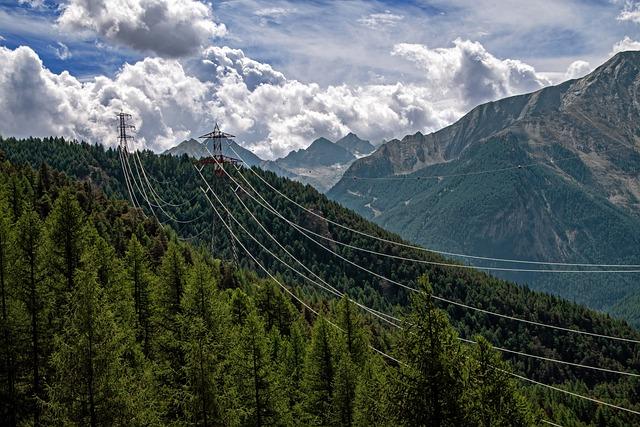Introduction:
Tree preservation laws play a crucial role in safeguarding our natural environment and promoting sustainable development practices. These laws are designed to protect and preserve trees that hold significant ecological, aesthetic, and cultural value. As communities strive to balance urban development with environmental conservation, understanding the importance of tree preservation laws becomes essential. This article will delve into the significance of tree preservation laws, examining the legal frameworks, policies, and practices that aim to conserve our valuable tree resources. By exploring the benefits and objectives of these laws, we can gain a deeper appreciation for the vital role they play in maintaining the health and beauty of our landscapes. Whether it be in England[1], within local ordinances in the U.S.[2], or any other region, tree preservation laws stand as crucial tools in fostering sustainable growth and biodiversity.
Table of Contents
- The Environmental Impact of Tree Removal
- Benefits of Tree Preservation Laws
- Challenges in Enforcing Tree Preservation Regulations
- Recommendations for Strengthening Tree Protection Policies
- Q&A
- Conclusion
The Environmental Impact of Tree Removal
Tree preservation laws play a crucial role in maintaining the delicate balance of our environment by regulating the removal of trees. These laws are put in place to protect the natural habitat, prevent deforestation, and maintain biodiversity within ecosystems [2]. By preserving trees, we ensure the preservation of habitats for various species, protect watersheds, and contribute to cleaner air quality. These laws also help in preventing soil erosion, regulating temperature, and enhancing the overall health of our environment.
When trees are removed without proper consideration or regulation, it can have significant negative impacts on the surrounding ecosystem. Uncontrolled removal can lead to habitat destruction, loss of biodiversity, and disruption of natural processes [1]. Trees also play a vital role in absorbing carbon dioxide, reducing pollution, and providing essential oxygen for living organisms. Therefore, enforcing tree preservation laws is essential for maintaining the ecological balance and ensuring sustainable development.
| Benefits | Importance |
|---|---|
| Preserve natural habitats | Protect biodiversity |
| Regulate air quality | Prevent soil erosion |
| Enhance ecosystem health | Maintain ecological balance |
Benefits of Tree Preservation Laws
Tree preservation laws play a crucial role in safeguarding our environment and maintaining the ecological balance for future generations. These laws provide a legal framework to protect and conserve trees, ensuring their longevity and the benefits they offer to society. By enforcing tree preservation laws, communities can enjoy a wide range of advantages that contribute to a healthier and more sustainable environment.
One of the key is the conservation of biodiversity. Trees are essential habitats for various wildlife species, helping to support diverse ecosystems. By preserving trees through legislation, we can protect the homes of countless organisms and promote overall biodiversity in our surroundings. Moreover, tree preservation laws aid in mitigating climate change by reducing carbon emissions and improving air quality through the absorption of harmful pollutants [1].
Additionally, tree preservation laws contribute to the enhancement of urban green spaces and the overall aesthetic appeal of neighborhoods. Trees provide shade, reduce noise pollution, and increase property values, making them vital components of a healthy and vibrant community. Moreover, these laws promote sustainable development practices and help maintain the natural beauty of our surroundings, ensuring a greener and more livable environment for all [2].
Challenges in Enforcing Tree Preservation Regulations
When it comes to the enforcement of tree preservation regulations, various challenges can arise that hinder the protection of our valuable natural resources. One significant obstacle is the lack of awareness among the general public and developers about the importance of preserving trees and the benefits they bring to the environment.
Additionally, inadequate monitoring and enforcement mechanisms can lead to violations of tree preservation orders, resulting in the unauthorized removal or damage of protected trees. This lack of oversight can ultimately weaken the effectiveness of existing regulations and compromise the overall goal of conserving our green spaces.
Moreover, conflicting interests between development projects and environmental conservation objectives can create tension and resistance in complying with tree preservation laws. Finding a balance between economic growth and ecological sustainability remains a continuous challenge that requires effective communication, cooperation, and strict enforcement measures.
Recommendations for Strengthening Tree Protection Policies
When it comes to tree preservation, it is essential to consider recommendations that can strengthen tree protection policies for the benefit of our environment. One crucial aspect is ensuring the implementation of comprehensive threat assessments, as highlighted by Global Tree Conservation efforts [2]. By accurately identifying potential risks to tree species, policymakers can develop targeted strategies to safeguard these valuable resources.
In addition to threat assessments, incorporating conservation genetics and assessing population demographics are valuable strategies that can contribute to the preservation of rare tree species [2]. By understanding the genetic diversity of tree populations and monitoring demographic trends, authorities can make informed decisions to protect and conserve these species effectively. These scientific approaches play a vital role in shaping tree protection policies that are sustainable and impactful.
Q&A
Q: What is a Tree Preservation Order (TPO)?
A: A Tree Preservation Order (TPO) is a legal order that protects specific trees or woodlands from being cut down or damaged. It is a crucial tool in preserving the natural environment and enhancing the quality of life in communities. More information on the process of trees preservation in Malaysia under Act 172 can be found in a study available at [1].
Q: How do Tree Preservation Bylaws impact property owners?
A: Tree Preservation Bylaws, like the one in Concord, can have various implications for property owners. While they may restrict the cutting down of trees, exemptions could apply based on specific circumstances, such as installing solar panels or renovating a septic system. For detailed FAQs about Tree Preservation Bylaws, refer to the information provided by the Concord government at [2].
Q: How do tree preservation ordinances help during construction projects?
A: Tree preservation ordinances play a vital role in construction and development projects by setting standards to protect trees before, during, and after the construction process. These ordinances aim to balance development needs with environmental conservation goals. To learn more about the evaluation of tree preservation during construction, you can review a study on the subject available at [3].
Conclusion
In conclusion, the significance of tree preservation laws cannot be understated. From promoting healthy trees in construction zones [1] to ensuring the conservation and expansion of tree canopies [3], these laws play a crucial role in safeguarding our environment and biodiversity. While proposed new laws are a positive step forward, there is always room for improvement to fully address the importance of protecting local trees and woodlands [2]. By recognizing the value of tree preservation laws, we can work towards a healthier and more sustainable future for generations to come.
Simpsons Tree Services, Servicing Melbourne’s North Eastern Suburbs
Book a quote online at www.simpsonstrees.com.au




